WordPress Analytics vs Google Analytics: which is best?
WordPress Analytics refers to plugins that show you some key analytics in the WP dashboard. The comparison is with Google Analytics, which is the most advanced, sophisticated, and complete website analytics reporting that’s available.
It’s a case of apples and oranges, of course – the two are so different they can’t really be compared.
That said, let’s look at the pros and cons of each.
First of all, what is WordPress Analytics?
WordPress Analytics
What people refer to as WordPress Analytics is actually the stats module within Jetpack’s WordPress plugin.
Jetpack is a bundle of tools created by Automattic, the company behind WordPress.com
The Jetpack plugin gives you analytics that you can see within your WP dashboard.
These analytics are very basic and are centred on page views per day.
(Source)
Google Analytics
Google Analytics is the leading website analytics tool.
It reports website traffic and tracks user behaviour with a level of detail that is truly mind-boggling.
It focuses on tracking and measuring the ABC of website analytics:
- Acquisition of visitors to your website
- Behaviour of your visitors on your website
- Conversion of your visitors to the goals of your website
WordPress Analytics vs Google Analytics
Here’s a comparison of WordPress Analytics vs Google Analytics that will help you choose between these two options.
Installation
To get Google Analytics data for your website, you’ll need to insert some tracking code on every page of your website.
If you’re doing it manually, this can be quite tricky but there’s a plugin (Google Analytics by ShareThis) that will do it for you.
If you want Google Analytics to show you which search terms people to find your web pages, there’s one more step: linking your Google Search Console account to your Google Analytics account.
Again, this can be quite tricky (took me several attempts to get it right).
I strongly recommend viewing this video before starting:
Setting up WordPress Analytics also involves verification: you’ll need to authenticate your site with wordpress.com
If you have a gravatar (a globally recognized avatar that appears whenever you comment in a forum or on a blog post) you will already have a WordPress.com account as it’s a prerequisite for creating a gravatar.
Once you’ve authenticated your website or created a wordpress.com account it’s just a matter or installing and activating the plugin.
In summary, both Google Analytics and WordPress Analytics require that you authenticate your site or install code on your site.
Type of metrics offered
Google Analytics is an amazing tool (especially considering its free) but it’s also very complex. It takes time to learn how to use it and many people find the GA dashboard overwhelming.
If you’re one of those people, you may take one look at Google Analytics, decide it’s all too much for you, and never go back again.
Website analytics are only useful if you use them.
So if you feel totally intimidated by Google Analytics, it’s much better to use a simpler, more rudimentary kind of website stats – it’s better to be tracking some stats than none at all.
That said, let’s have a quick look at what you can discover using Google Analytics.
As a blogger you need to know how people are responding to your content. That’s the only way you’re going to be able to better serve your audience and improve reader engagement.
There are dozens of metrics you can track within GA but let’s assume you don’t have much time and you just want to keep it to the bare minimum.
Here are 5 key metrics that every blogger should be tracking:
1) Source of incoming traffic
Within GA just go to Acquisition > Overview:
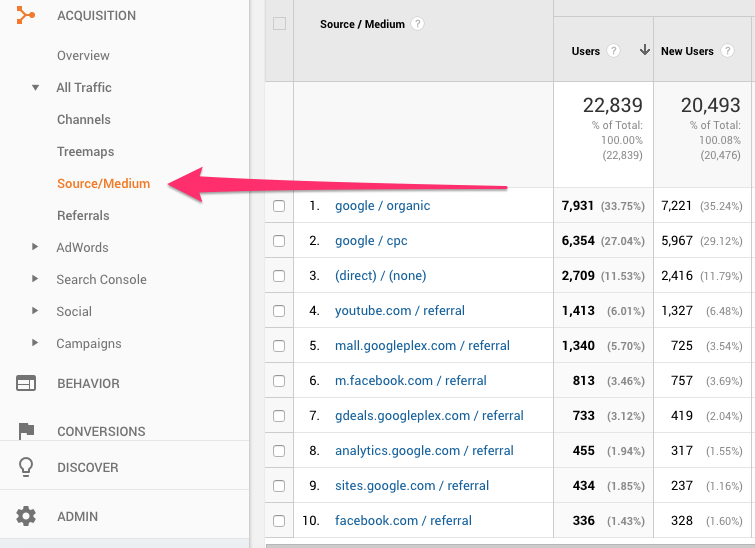
This window will show you, in descending order of importance, the sources of your traffic:
- Organic Search – if you’re spending a lot of time and effort optimizing your pages for the search engines, its important to know if it’s paying off
- Referral Traffic is traffic from other websites – if a large proportion of your traffic is referral traffic that means that other website like your content and are sending their traffic to you.
- Social – if traffic from social media makes up only a small proportion of your traffic, you may want to become more active on social media.
2) Source of email subscribers
If you have setup a Google Analytics goal that records visitors to your newsletter ‘thank you’ page, you’ll be able to see exactly where your subscribers are coming from.
In the screenshot below, I can see that this website got 37% of its sign-ups from Google Organic Search and 25% from Twitter:

If you’ve been putting an equal amount of time and effort into SEO and Twitter, this data shows you that Google Organic Search is marginally more effective in bringing in new subscribers.
In a nutshell: this metric tells you where to concentrate your efforts so as to build your list faster.
3) New vs. returning visitors
Just go to Audience > Overview and you’ll see a pie chart showing the ratio of New to Returning visitors:
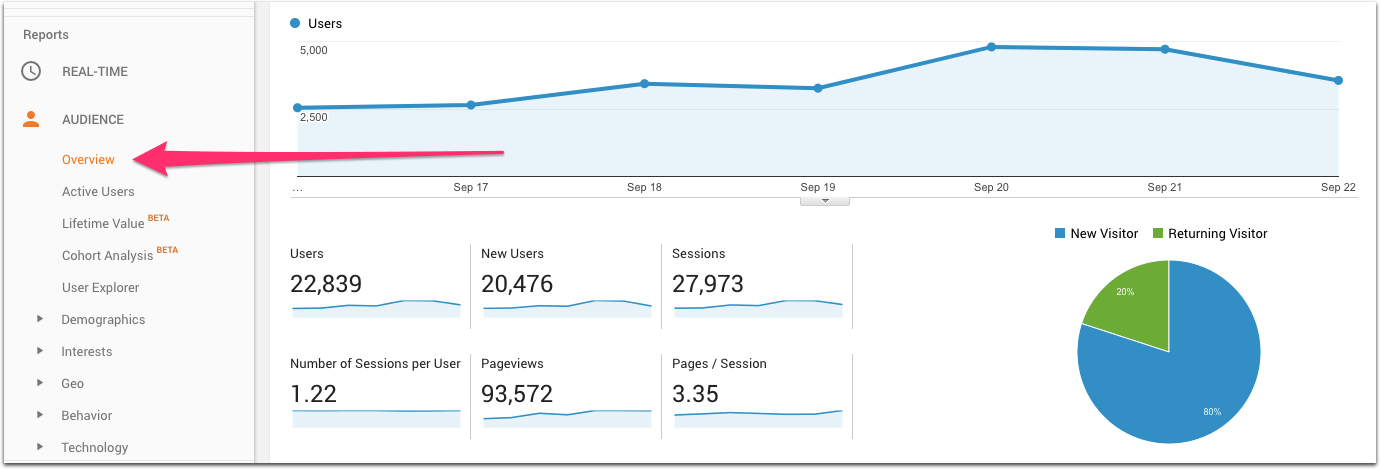
If you have a high ratio of Returning Visitors to New Visitors, that’s a good sign – it means people like your content and are coming back for more.
On the other hand, if you have a high ratio of New Visitors to Returning Visitors, that means your promotion techniques are working well and you’re bringing in lots of new visitors.
4) Pages per session
This metric is visible on the same window as above (Audience > Overview):
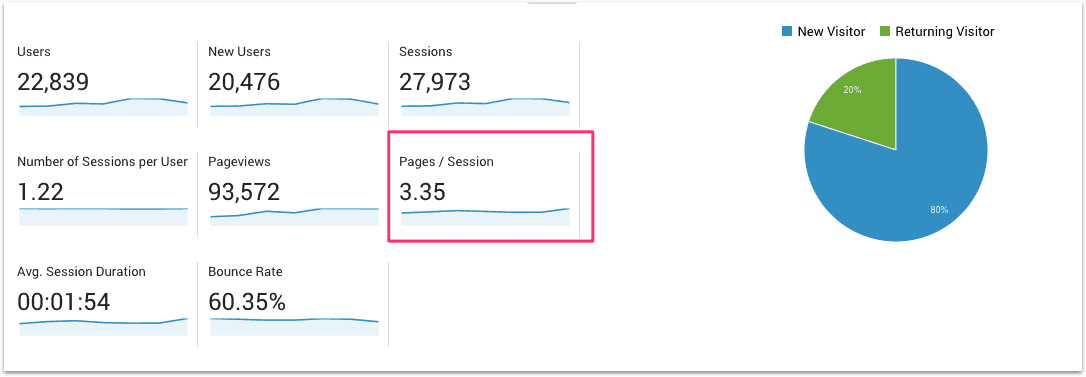
A high number of pages per session (i.e. per visit) is a good sign – it means your visitors like your content and explore beyond the page they landed on.
5) Bounce rate
Again, this metric is shown on the same view as above (Audience > Overview):

Bounce Rate is the percentage of visitors who leave your site without visiting another page.
In general, you want to aim for a low bounce rate, as that means your visitors like what they see when they arrive and decide to check out what else you have.
Google interprets a low bounce rate as evidence that the information on your page is answering the search query that the visitor typed into Google.
And because Google is constantly trying to improve the match between what people type into the search box and what they find in the results, Google will reward a low bounce rate by pushing your page higher up in the search results.
Now let’s look at the stats in WordPress Analytics.
Once you’ve installed Jetpack and connected your WP site with wordpress.com you’ll see a basic bar graph on your WP dashboard:

Below the bar graph you’ll see a number of reports that show:
- Referring sites
- Top Posts and Pages
- Search Engine Terms (that were used to find your pages)
- Clicks
- Subscriptions
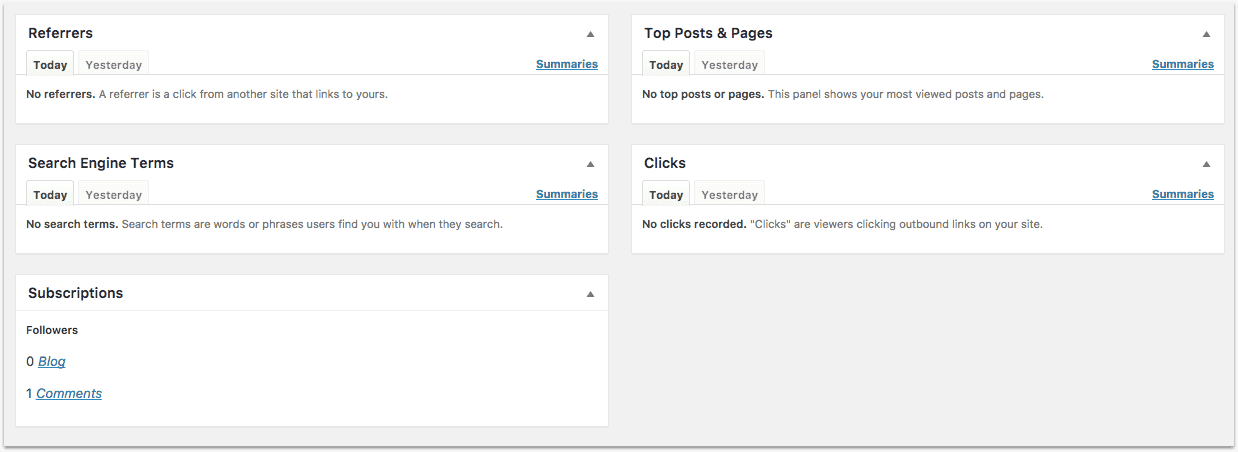
Bear in mind that these stats are based on page views, which is probably the least useful of all website metrics.
For example, page views doesn’t distinguish between 10 different visitors and the same person coming back 10 different times.
Google Analytics: Pros and Cons
Here are some of the pros and cons of Google Analytics.
Google Analytics Pros
- Very detailed metrics that allow you to understand visitor acquisition, behaviour, and conversion and improve website performance
- Graphs, Pie Charts, Bar Charts and Maps help you visualize the data
- Free
Google Analytics Cons
- Investment of time and effort to understand how to use it
- Not accessible from WP dashboard
- Can be overwhelming
- Have to install GA tracking code
WordPress Analytics – Pros and Cons
Here are some of the pros and cons of WordPress Analytics.
WordPress Analytics Pros
- Accessible from within WP dashboard
- Metrics that are simple to understand
- Is not overwhelming
- Free
WordPress Analytics Cons
- Metrics are nowhere near detailed enough to understand audience acquisition, behaviour, and conversion
- Have to authenticate website with wordpress.com
- Jetpack is a large plugin and will place a burden on your website load time
Alternatives To WordPress Analytics
Jetpack is by no means the only plugin that offers analytics within your WordPress dashboard.
Here are some alternatives with a brief explanation of what they offer:
Google Analytics WD
Google Analytics WD gives detailed stats on:
- Site audience
- Performance
- Real time visitors
- Traffic sources
- Visitor geolocation
- AdSense and Adwords reports
Lets you:
- Configure custom reports
- Get detailed stats any metric and dimension you want
- Track custom dimensions by post type, author, category ,tag etc
Pricing:
- Free
- $30 (Personal Plan)

Beehive Pro
Beehive Pro gives you fantastic charts and graphs to help visualize the key metrics on your site.
Key features:
- Track the success of individual posts and pages
- Track visits, page views, bounce rate, average visit duration, and referrers
- One click to connect with your Google Analytics account
Pricing:
- $49/month (WPMUdev Membership)
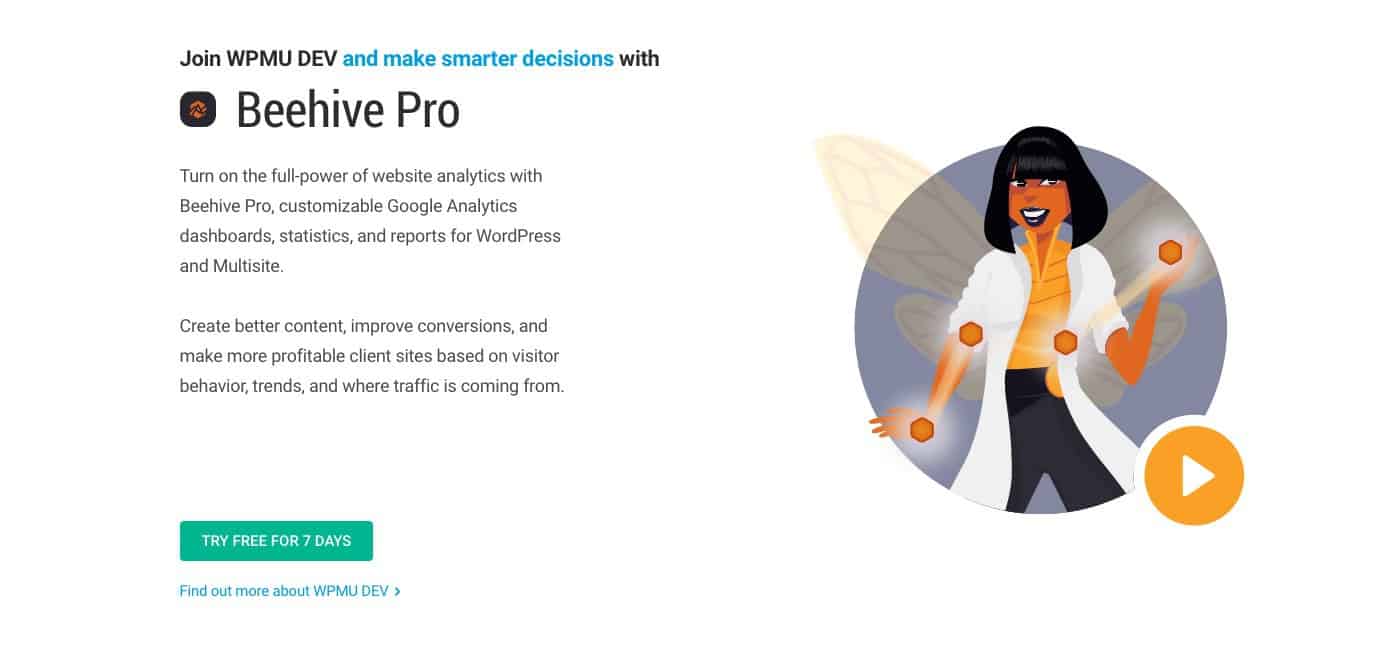
GADWP (Google Analytics Dashboard for WordPress)
GADWP stats include:
- Number of visits to your site
- Number of unique visitors
- Bounce rates
- Organic searches
- Pages per visit
Other features:
- Segment your data by page and post
- See performance for each post or page
- Installs the latest Google Analytics tracking code
Pricing:
- Completely free
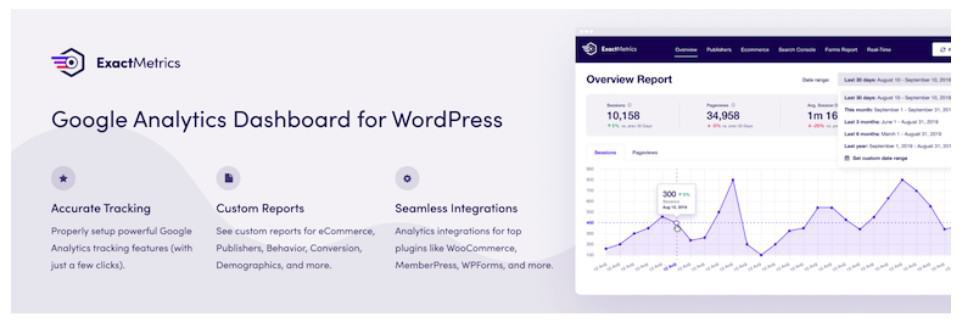
ManageWP
ManageWP provides very basic stats based on page views.
But you can connect the plugin to your Google Analytics account (with the click of a button) and see a range of GA charts within the WP dashboard.
Pricing:
- Free (inlcudes Analytics)
- Paid (various plans)
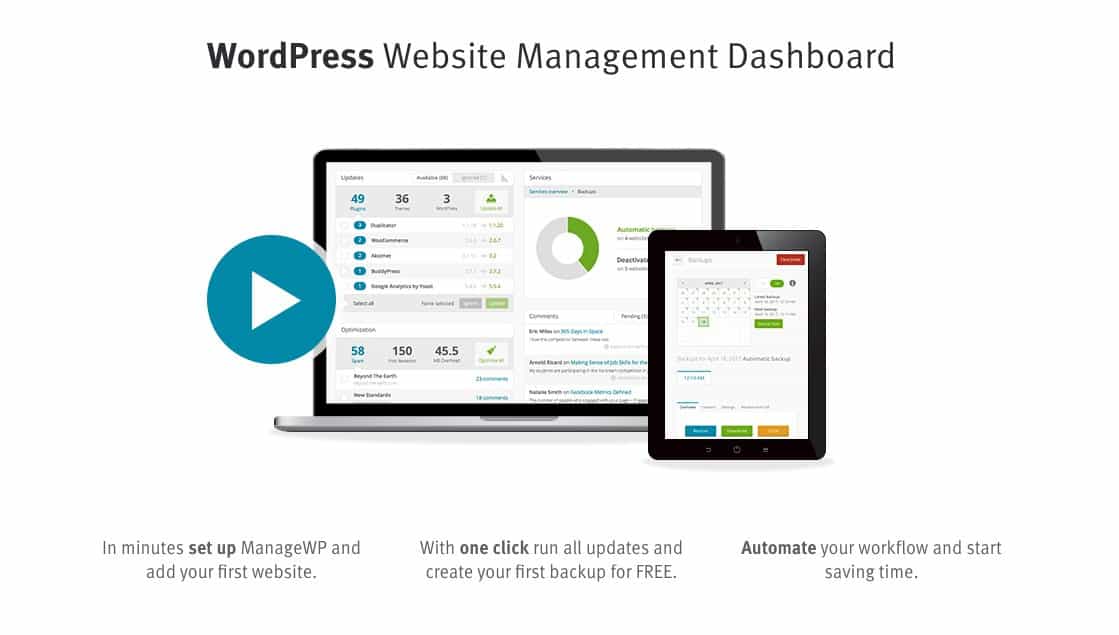
Analytify
The main features in Analytify are:
- Real time stats
- Social media stats
- Top keywords used to find your pages
- Page / Post level analytics
Pricing:
- $39 (Personal)
- $69 (Small Business)
- $99 (Agency)
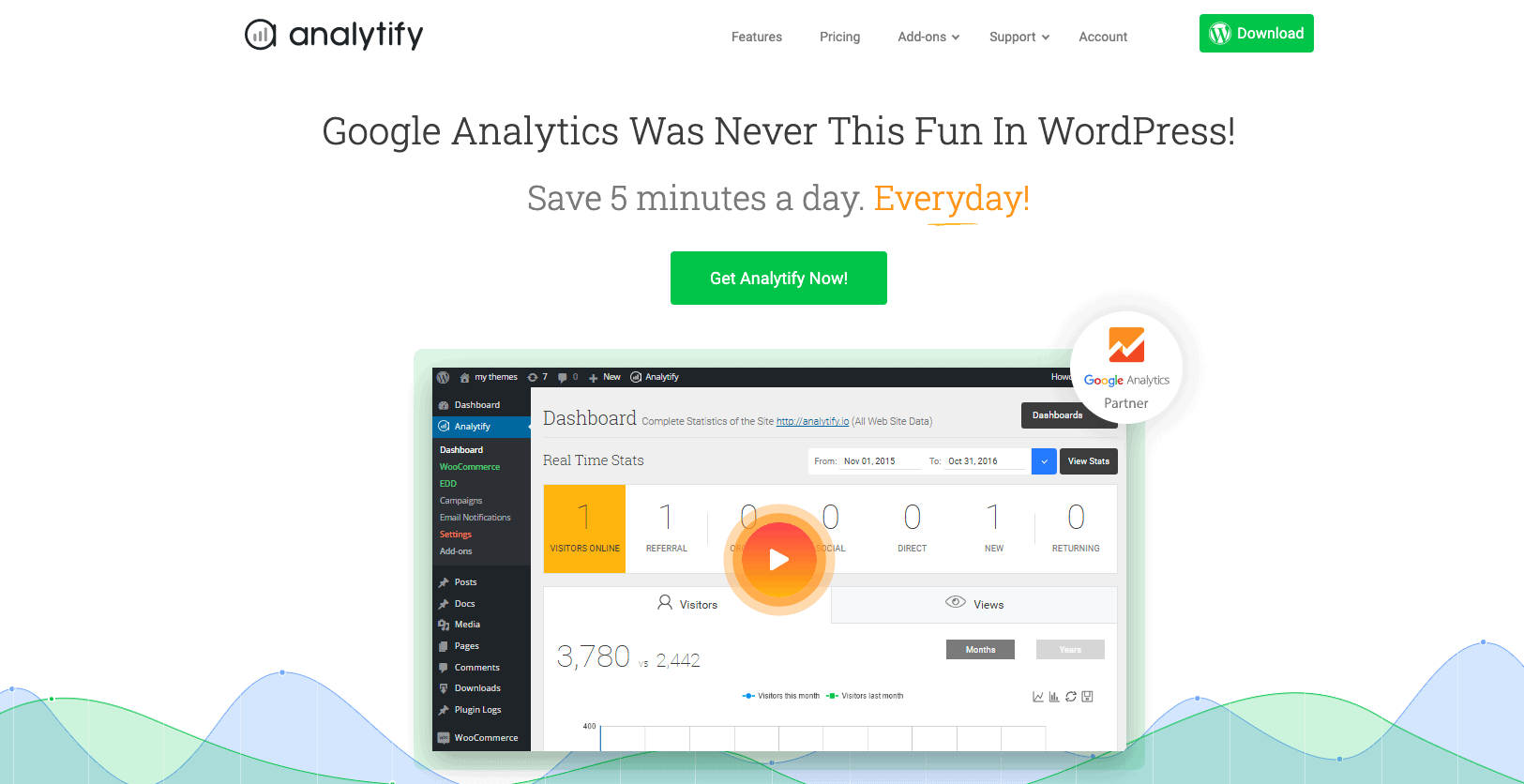
MonsterInsights
MonsterInsights main features are:
- Which pages visitors land on
- Session duration
- Pages per session
- Most popular posts and pages
Pricing:
- Free (limited features)
- $89 p/year (Pro)
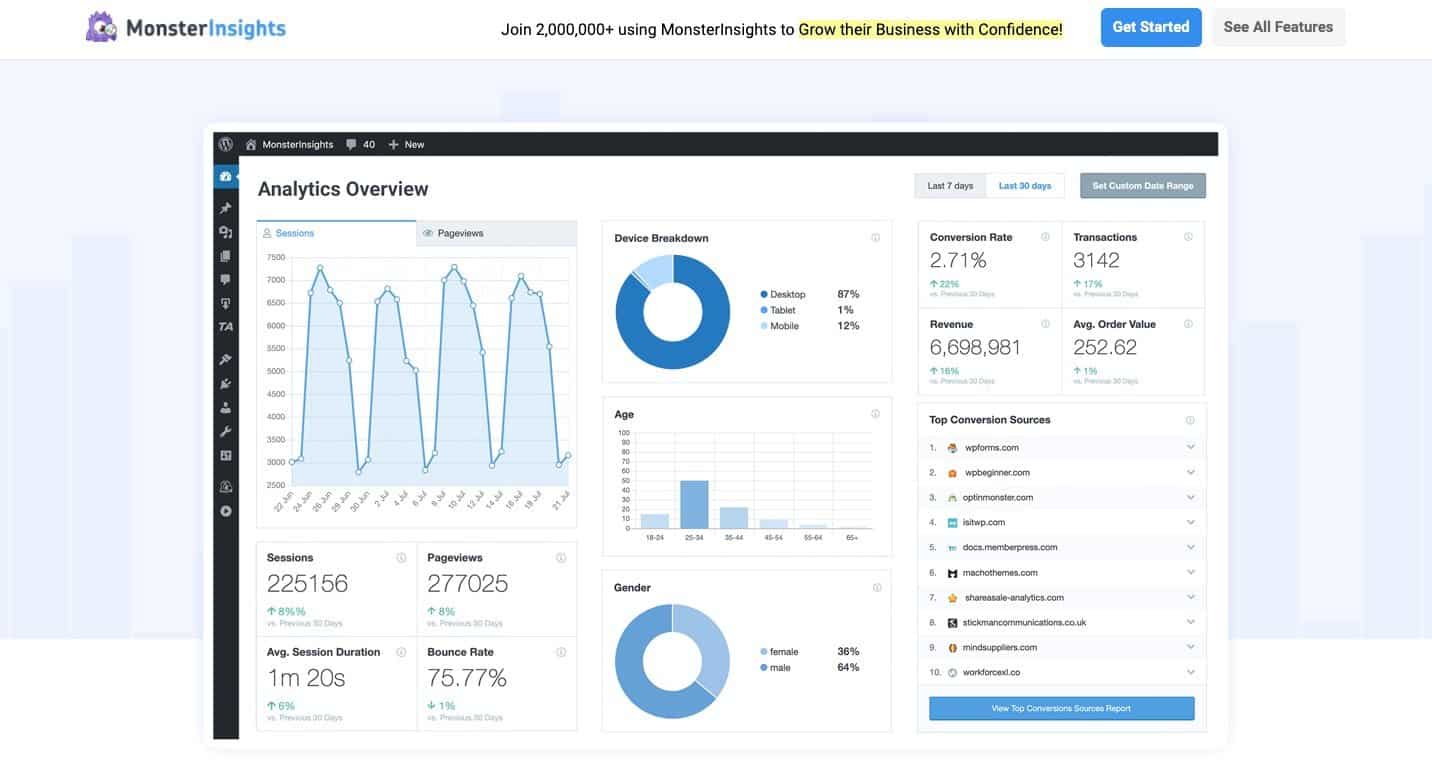
Summary
WordPress Analytics vs Google Analytics – which should you use?
Since first publishing this article, I’ve changed my attitude to plugins.
Back then,
My advice now is not to use a WP plugin for your website analytics.
Plugins slow down your website. For most of us it’s a real battle to keep our plugins under about 20.
Why add to your plugin problems when you can view your stats on Google Analytics?
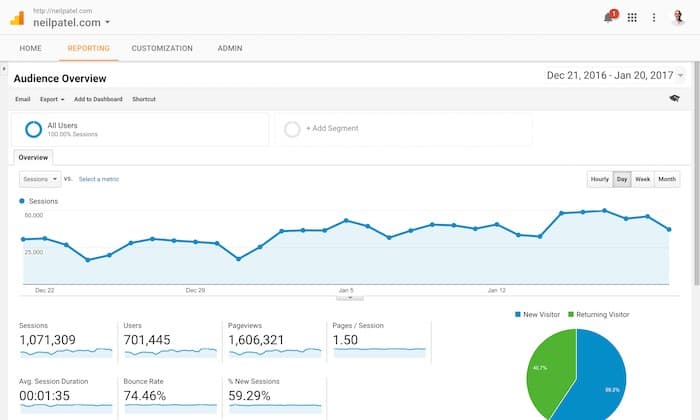
Great write-up Rob.
Very interesting post on Google Analytics.
Awesome tips and step by step explanation. Really appreciate the way you have written and explained.
Thanks for sharing it with us. Worth reading it.
Good work..!!!
Hi Lisa, thanks so much for that feedback. I’m glad it was useful 🙂 Rob.
Thank you so much! Your article helped me decide to keep Google Analytics.
My issue is IP addresses. I have added several (IP, IP4 and several IP6 addresses to exclude myself in the data via filters) but each time I log in, it shows in real time that I’m on.
I’ve added many IP addresses, even looking at both my 2.4 and 5 networks, I’ve added them for my iPad and my iPhone, but I’m still showing as an active real-time user. I assume this distorts my data. It seems website that check my IP addresses all have something different.
Am I correct?
How do I resolve this and keep myself out of my data?
You are correct in that Google Analytics offers soooooooo much more data than WordPress Analytics. It’s free and it’s very cool.
Thanks! Deborah
Hi Deborah,
Thanks for your question.
I remove traffic from own IP address by setting up a filter in GA like this:
These are the settings I use for the filter:
It’s always worked for me – I’ve never had any problems of the kind you mention.
I found this article that may solve your problem: Google Analytics Filter Not Working? Here’s How To Fix It.
Hope this helps,
Rob.
Hi Rob,
Thanks for the article… I *THINK* i understand this better.
So i have GADWP installed/working and has Google Tag…
BUT…
GoogleAnalytics doesn’t seem to be getting aything…
Do I need to still do something FURTHER if i want to see it on BOTH?
(I originally thought GADWP just passed data to GA, am i wrong?)
Hi Fred,
It sounds like you have missed a step. My guess is you may not have authorized the plugin with your Google access code.
This video may be helpful: https://youtu.be/UZ8Gkqf5R2E
Best,
Rob.
It is authorized, don’t know why, but after overnight, it is working. My stats are both from previous day (except for the “live”, but that isn’t a lot of use… patience, gotta learn lol… thx
Hi Fred, I’m glad it’s been resolved 🙂
Best, Rob.